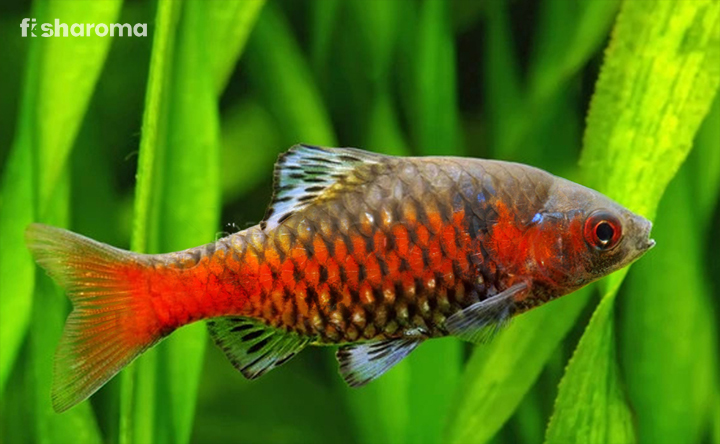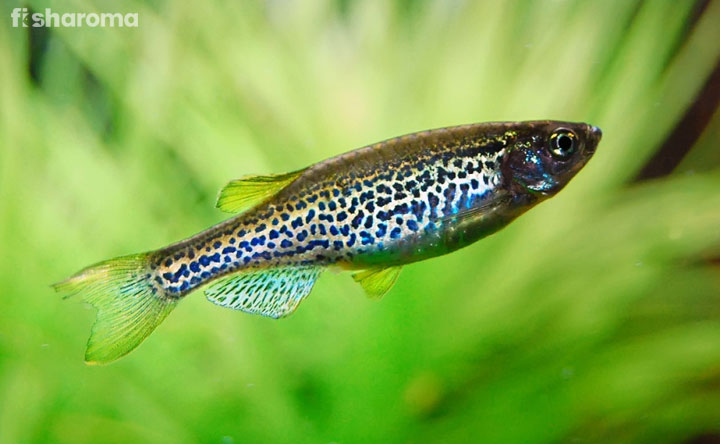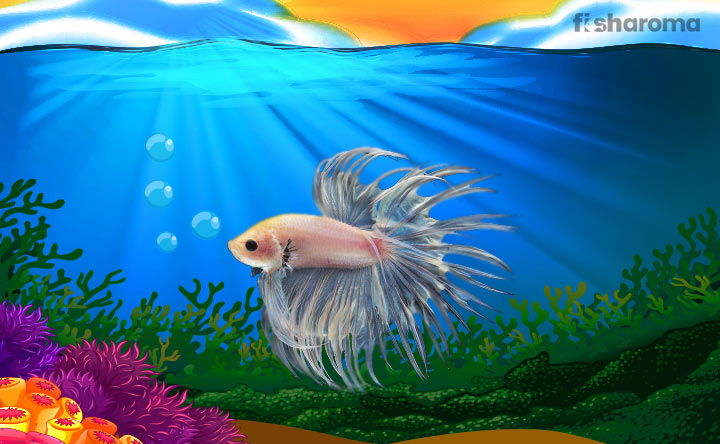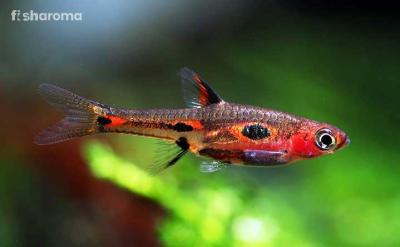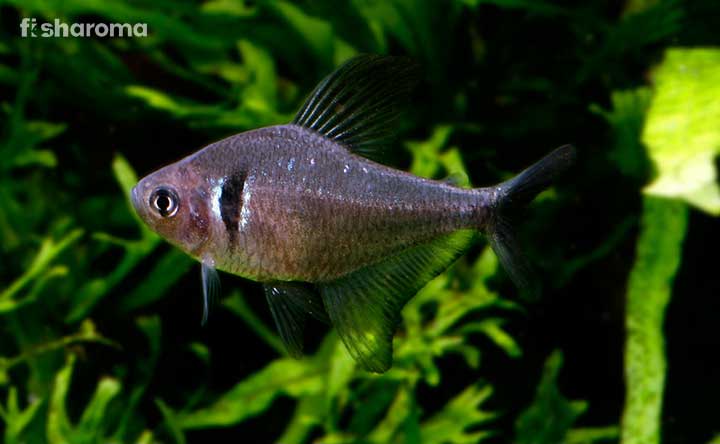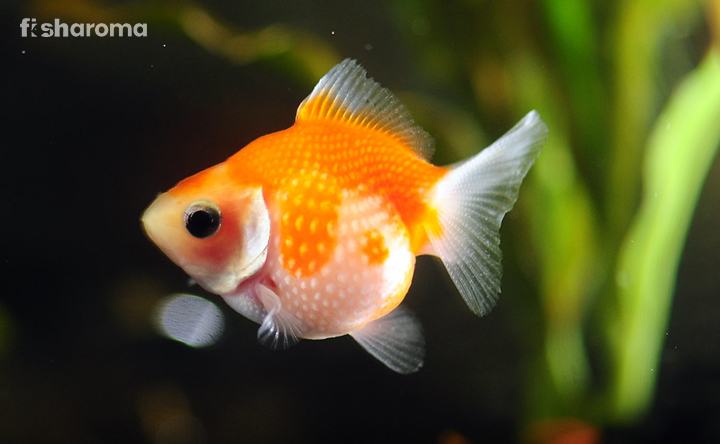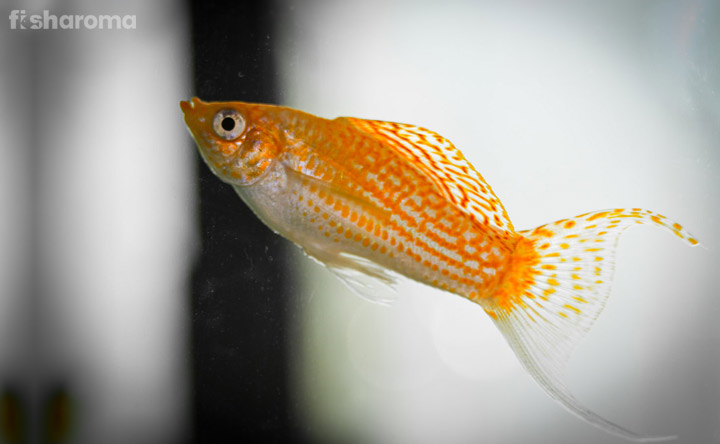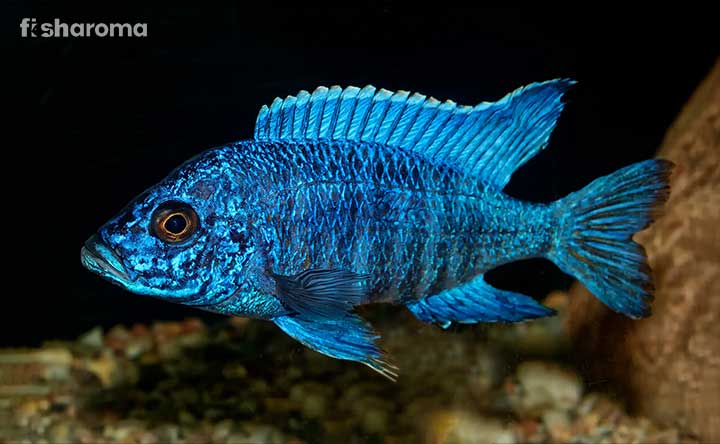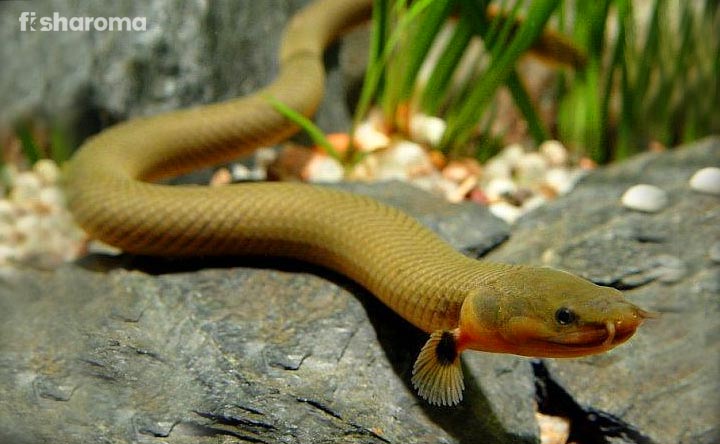Pictus Catfish – The Complete Care Guide for Future Fish Keepers
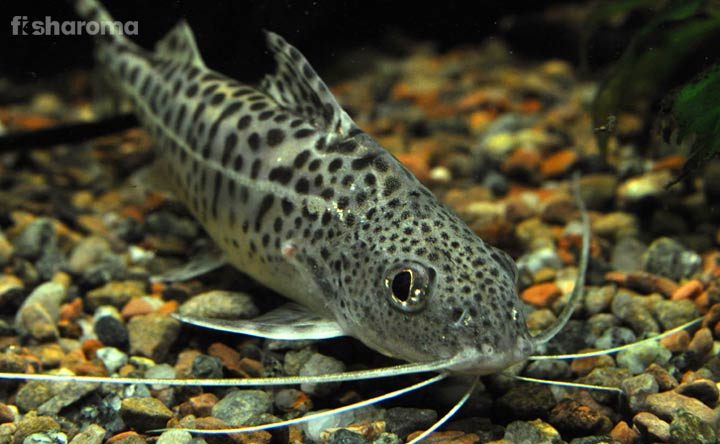
Are you fond of colorful and peaceful fish breeds? Obviously, many beginner fish keepers prefer choosing attractive and passive-natured water species for their fish tank. The energetic personality, peaceful nature and appealing looks of Pictus Catfish fascinate aquarists in petting the breed in their home and office.
In this complete care guide, you will clearly get the details about this fish. So, let us discuss the vital information about Pictus Catfish before you plan to pet the familiar fish breed.
Quick Details about Pictus Catfish
Have a quick look at the below-mentioned table to acquire a short overview of the details of Pictus Catfish.
| Scientific Name | Pimelodus pictus |
| Origin | South America |
| Life-Span | 8-10 Years |
| Color | White, Black, Purple and Silver |
| Temperament | Peaceful |
| Size | Up to 5″ (12 cm) |
| Diet | Omnivore |
| Family | Pimelodidae |
| Compatibility | Familiar |
| Tank Size | 55 Gallons |
| Care Level | Easy |
Overview
Fish keepers also know Pictus Catfish by other names like Antennae fish, Angel Cat, and Pictus Cat, and this fish is preferred by the aquarists because of its adjustable nature and capacity to stand out in any kind of water.
You will often notice this active fish in the hot geysers of hilly areas and freshwater streams. Pictus can generally grow up to 5 inches or more than that, but it needs a large aquarium to dwell because of its comfortable swimming. This passive and social fish is also known as a beginner-friendly fish because of its calm nature! And moreover, you can get this sweet little pet inside your aquarium for just $9.69!
Remember, Pictus Catfish has sharp pectoral fins! So, while transporting it from one tank to another, be careful because its fins may get stuck to the fishnet, which can harm the fish. Instead of regular fishnet, try to use a plastic containers while shifting Pictus.
Origin of Pictus Catfish
This popular catfish was first described by an Austrian zoologist and ichthyologist, Franz Steindachner in 1876 and was found in the warm water of Orinoco and Amazon river basins in South America. These breeds are rarely found in estuaries, lakes, and ponds.
The genus of this catfish is named “Pimelodus” derived from the Greek word “Pimele” that means fat and odious with large teeth. The word “Pictus” is also derived from the Latin word that means painted spots in the body.
Pictus Catfish Appearance
This silver-shaded catfish has many dark black spots on its body. The transparent and edged fins with white barbels make the fish more attractive and also defend it from parasites. You may find the slender and long body of this 5″ (12.7 cm) fish growing more while living in the wild. The whiskers of this fish are long like antennae that reach down to the caudal fin, and the barbels also help the fish navigate the muddy water.
This breed is also famous for having sharp spines just like edged fins which can cause trouble to this fish. Moreover, Pictus has a downturned mouth and a large-forked tail. If you want to find the difference between the male and the female breeds, the males are slightly larger and rounder than the female fish.
People sometimes get confused between the Angelicus Catfish and Pictus Catfish because of their similar looks, but Angelicus catfish is a different species with shorter barbels as compared to Pictus Catfish.
Tank Requirements for Pictus Catfish
Try to match your aquarium closely natural to the environment of a wild river, if you are planning to set a fish home for Pictus Catfish. Generally, these fish are found in sandy river-beds of the Amazon River basin, so try to arrange sand for the bottom part of the aquarium.
Tank Size
Set minimum 55-gallon tank for this 5-6” (12-13 cm) fish, so that it does not feel suffocated and can swim as much as it wishes. Try to keep three or four fish of the same breed together because Pictus Catfish likes to live in a group.
Ornaments
Usually, this fish is found under the deep water surrounded by many plants in South American forest, so try to keep plants like Java Moss and Hornwort in the river. Moreover, keep lots of hiding places, river rocks, driftwoods, and caves to make the dwelling place natural and comfortable for your little friend.
Filter
Emulate the high flow of the water of the aquarium like a river by fixing a good hang-on-back filter in the tank. This will create an adequate current to keep Pictus Catfish healthy. However, keep the parameters of water stable.
Lighting
As this fish is nocturnal, so it likes darkness, and you must fix dim light on the top-most part of the fish tank for their ease.
Water Type for Pictus Catfish
Water is the minimum requirement for an aquatic species but it is also necessary to follow some essential things before keeping water in an aquarium of Pictus Catfish. Try to follow some necessities given below:
Temperature
Try to keep mild warm water in the fish tank of Pictus Catfish. The temperature of the water should be 75-81°F (23-27°C).
pH Level
Maintain the pH level of the water between 7.0-7.5.
Hardness
The hardness of the water in the Pictus Catfish tank should be 4-15 dGH.
Cleaning Process
You can use a vacuum gravel cleaner to clean the gravels, rocks, caves and other objects in the fish tank. Instead of using harsh chemical detergents, try to use soft liquid soap and a sponge to clean the tank walls and corners. After washing, wipe the water droplets with a linen cloth.
Replacement Procedure
While starting the water replacement process, remember that you have to maintain the water temperature, pH level, and hardness when you are keeping a new batch of water in the aquarium. Change 10% of the water in the tank weekly and replace 25% of water when you are doing the replacement process once in a month.
Pictus Catfish is benthopelagic in nature, so if possible then keep clean and aerated water in the fish tank.
Diet for Pictus Catfish
This omnivorous fish is also a scavenger that cleans the fish tank by eating unnecessary things, along with plants and meaty foods. These fish also prefer eating:
- Insects like dragonfly
- Algae
- Small Fish
- Snails
- Shrimps
You can feed them homemade foods and frozen foods like:
- Fresh Brine Shrimp
- Beef Heart
- Vegetable Flakes
- Frozen Blackworms
- Frozen Bloodworms
Moreover, some ready-made fresh and frozen foods for Pictus Catfish are available in the market that is best for adults and juveniles such as:
- Hikari Sinking Wafers
- API Fish Food Pallets
- Tetra-Veggie
- Fluval Bug Bites
These foods should be fed twice a day to your sweet companion because overfeeding may cause dysentery and appetite problems, as these fish have a tendency to excrete more than other breeds.
Pictus Catfish Temperament
These peaceful temperament fish are easy to pet because they are shy and prefer dwelling inside the caves at a tank. Moreover, Pictus Catfish does not attack or disturb any other water fish, but you should avoid keeping small fish with this fish because it has a largemouth, and it can very easily consume small species. This fish is beginner-friendly, as mentioned above; so you can easily keep this breed without facing any difficulties.
Suitable Tankmates of Pictus Catfish
Pictus Catfish is famous and lovable by the aquarists because of its non-territorial and non-aggressive behavior towards other species. It likes to maintain peace and uniformity in the fish tank family, so it travels with a school of fish. However, there are a few things you must know before keeping them with other fish to maintain its compatibility:
- They can eat fish like Neon Tetra and Guppies, so keep that in mind before setting a tank, and don’t keep small species with Pictus, as suggested above.
- Pictus is an active swimmer, so avoid keeping slow-swimmer species like Cichlids with it because Pictus may get annoyed to swim and live with such breeds. Moreover, the sharp barbels of Pictus may harm other fish, so be careful.
- Keep same size fish with Pictus Catfish and you can also keep fish of the same groups because these fish like to live in a group.
If you consider these suggestions before setting a tank or choosing suitable tankmates for Pictus Catfish then there will be no issues. Have a look at some suitable tankmates of Pictus:
- Opaline Gourami
- Giant Danios
- Doradidae
- Striped Raphael Catfish
- Loricariid
- Other Catfish
Pictus Catfish Breeding
While mating and reproducing, Pictus Catfish needs a minimum of 200-gallon tank because this fish requires much space during the reproduction time. The female Pictus lay eggs in the warm water and the male fish fertilize the eggs and protects them, the temperature of the tank should be maintained by the fish keepers.
During the egg-laying time period, the females grow fatter and rounder than the males. This fish also prefers a soft water environment to breed in captivity. So, try to arrange that kind of ambiance for your little buddies if you want to encourage their breeding.
Diseases of Pictus Catfish with Prevention
The Pictus Catfish is like other catfish, lacking scales in body, and it’s prone to the surface disease like Ich and White Spot. Therefore, maintaining the water conditions of the tank and changing it weekly may help the fish get away from the complex health issues. If this fish is affected by fungal infections and ich then it will suffer from these symptoms and problems:
- Loss of appetite can be a common problem.
- The fish my get abstained from a shoal.
- It tries to rest in the bottom of the tank because of weakness.
- The fish will swim near the surface of the water.
- Pictus starts scratching and rubbing against different objects in the aquarium.
- Labor-breathing is also one of the reasons for this health issue.
You just need to feed healthy foods to Pictus Catfish and keep its tank clean by changing the water, maintaining the water temperature and ambiance of the fish tank.
Care Guide for Pictus Catfish
To maintain the health and wellbeing of a fish, try to keep the mind of the fish stress-free by giving a proper eco-friendly environment at first; secondly, maintain the appropriate temperature of the water for keeping the fish. Also, follow some care tips for their wellbeing:
- Make sure that you provide enough space for Pictus Catfish for swimming.
- Keep healthy and peaceful fish with Pictus Catfish because of the stress-free mind of your finned-friend.
- Clean the aquarium four times a week, to avoid fungal infections.
- Also, clean the objects in the aquarium, which may turn the water poisonous when they get dirty.
- Do not keep any seashells and reefs in the freshwater tank which can make the fish feel uncomfortable.
- Consult with a veterinary doctor if your pet fish is suffering from any serious illness.
Difficulties in Keeping Pictus Catfish
It is clear to us that Pictus Catfish is a passive-natured fish, still, there are some difficulties in petting this fish defined below:
- It’s a predator fish, so fish keepers need to be very careful while choosing tankmates for this fish.
- This fish excretes much, so it is not very easy to select a proper diet for Pictus Catfish. You need guidance from an expert dietician for choosing proper nutrition and nourishment for the good digestive system of this breed.
- These fish are prone to be affected by various diseases because they have no scales in the body. So, be more preventive when you find any unhealthy symptoms in the behavior of this fish.
- You need to be careful to handle this fish because of its sharp fins and tail, which can hurt them and other water species.
- You need huge space and large aquarium for this fish so that it enjoys playing and swimming in the tank just like in wild rivers.
Varieties in Catfish
There are various species in the family of catfish that are more or less similar to Pictus Catfish. We have mentioned about three popular catfish as follows:
1.Channel Catfish – The Channel Catfish is similar to the Anglers who have sharp tails and flat head. You may observe a protruding upper jaw of this fish. These fish are often found in slate color and olive-brown color, and the bellies of these breeds are shaded with white and silver.
Moreover, the anal fins of this fish have 24-29 rays. Native to Nearctic and Canada, this freshwater fish is omnivorous and likes living in mild temperature water.
2. Blue Catfish – The other name of Blue Catfish is Forktail Catfish because of its fork-like tail and fins. The blue body of this fish is shaded with the white hue on the belly.
These fish can reach up to 24″ (60 cm) and weighs about 20-40 pounds. Originated from the Mississippi river, this fish also loves dwelling in warm water stream just like Pictus Catfish.
3. Flathead Catfish – This fish has a flat head and smooth skin without scales in its body. This fish is usually pale in color, shaded with light cream or yellow, whereas the young fish are dark brown.
Being carnivorous, this fish likes eating worms, crayfish, and invertebrates. They prefer the time from May to August for spawning and breeding when the temperature of the water is 75- 80°F (23-26 °C)
Interesting Facts about Pictus Catfish
- The barbels of the wild catfish help in navigating it in muddy waters also.
- The entire body of Pictus Catfish is covered with taste buds which can detect chemicals in the water in response to the touch.
- This fish breathes through its smooth skin, rather than the snout.
- The toxins of catfish are poisonous, so it is better to clean the tank four times a week.
- The mating seasons of Pictus Catfish are early summer and spring.
Get Information about Other Fish that are Good Swimmers
You may also know about some other fish who are active and like swimming such as:
- Rainbow Shark: This South Asian freshwater fish belongs to the Cyprinidae family and is semi-aggressive in nature. But similar to Pictus Catfish this shark is also the best active swimmer.
- Killifish: This oviparous tropical water fish is very active than other river water fish. Moreover, it likes jumping and swimming from dawn to dusk in water.

